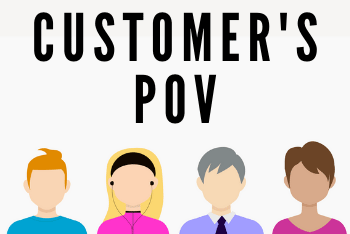The first impression is indeed the last. A customer’s first interaction with your product or service has to be impressionable, meaningful, useful, and desirable. Brand loyalty, high profitability, lead generation, business scalability, positive word of mouth, and customer satisfaction could only be ensured if the user interaction is organically positive. This interactive process of the customer with your product, service, or brand as a whole is known as UX or user experience design services. The user interface could be appealing or dull, depending on how much effort you put into UX design.

Two Fold Strategy
The purpose of UX is two-fold, catering to customer and business need at the same time. The synergy of business goals and customer needs translate into a positive and meaningful UX experience. Brand positioning is how the consumer feels about your brand. To influence a user’s feelings, perceptions, and observations about your brand, a business has to target the mind of the user first. A brand, in return makes the use of this robust positioning strategy by strengthening its base in the market. The encounter of users with a business’s offerings through a website or a store lays the foundation of UX. It reaps benefits in the form of customer satisfaction, retention, and relationship building.
The UX Design Ladder

To explore how the UX design is beneficial for your business, the ladder structure is critical.
Customer Satisfaction
According to a recent study, 69% of the online shoppers leave the website after adding items to their wish list or cart. The primary reason for it being an unsatisfied and unhappy customer. Thus 69% of the potential sales go down the drain, which is a massive setback for any business. The customer is unsatisfied primarily because of the checkout procedure. Had the checkout process been more straightforward, user friendly, and simple, the visitor would have made the purchase and left the website satisfied. The goal of every business is sales and profit, and the first step towards that goal is customer satisfaction.
Customer Retention
UX design must never make the customer feel agitated, frustrated, or confused. Laying out clear options and easing the digital footprint of your customer means higher customer retention. A customer pleased with the search results, buying options or the user interface as a whole is a returning customer. Thus an appealing, easy, and interactive design assures customer retention. As a business, your most significant failure is an unhappy user, leaving your website for your competitors.
Customer Relation
Effective customer relations is a by-product of customer retention, which itself is a subset of customer satisfaction. A favorable digital ecosystem delivers a high sales volume. This positive impact on the customer reaps quantitative benefits in terms of revenues and qualitative advantages in the form of brand loyalty, lead generation, strong customer relation, and positive word of mouth. Effective UX design and extraordinary digital experience are capable of delivering content and conversion opportunities to the business. Businesses could achieve as high as a 200% conversion rate through amplified, aesthetically pleasing, and user-friendly UX design.
A Game of Seconds
The MOT comes into play the very instance the user comes to your website. The business has only a few seconds, during which it can influence the consumer through its digital space. The role of the strategic design team and brand team is integral because the first few seconds of the user-friendly interface and aesthetically-pleasing desktop make the verdict. Plagiarizing is not acceptable but keeping an eye on your competitor’s work is smart and strategic playing. You must navigate through your competitor’s website to access their UX and identify where you lag.
Customer’s POV
For a business to understand fully what a customer seeks, it must consider itself in their shoes. To establish an interactive medium between the user and the industry, view your offerings from their point of view. For a customer, the following things matter the most;

- Visual design or imagery
- Display of information
- Ease of navigation
- User-friendly commands and tools
- Interactive digital space
Visual design or imagery includes pictures, wallpapers, or photos used along with their placement, the logo design, and style. Anything that the normal eye catches at first glance should be enhanced to perfection. The display of information makes it easy for the customer to navigate freely through the digital space. There is no clutter and confusion. This, in turn, allows ease of navigation. The customer can explore without going through the trouble of pop-ups, ads, and several clicks. Save the trouble of numerous steps. A user-friendly interface allows the user to comprehend the digital ecosystem without any technical hassle and confusion. Interactive digital incorporates efficient use of the customer service tab or handling of customer queries. The user must be able to find answers.
Users Buy Experience
When a business invests in making a customer feel special, the customer reciprocates that feeling. A customer does not just buy the product or the service. They buy experience. To understand the phrase “buying experience,” let us demonstrate a scenario. The concept of second life is no longer all Greek to us. This is a virtual world where people buy properties and companies go for branding and marketing purposes. Why do people need this virtual world when they already have real-world? The answer is simple; they do so to buy experience. Websites or apps provide that experience. Users go online looking after that digital experience.
Learn from the Best
- Google: this search engine offers the best UX to its customers. The google doodle feature makes it appealing, and the ease of exploration makes it welcoming for any newcomer. The region-wise customization it offers gives the customer a sense of ownership and belonging.
- Instagram: this picture sharing platform has transformed the digital presence of most users. The fonts, use of colors, filters, and story sharing features have made its competitors shy.

Author Bio: Momina Asif
Momina is a Content Strategist: she plans, creates, and manages content. When she is not working, you can find her binge-watching TV shows or engrossed in books.
